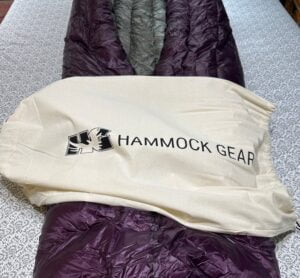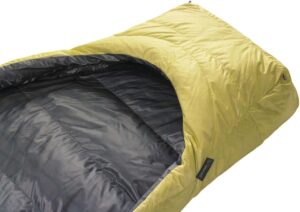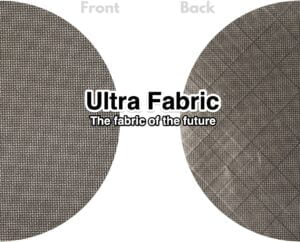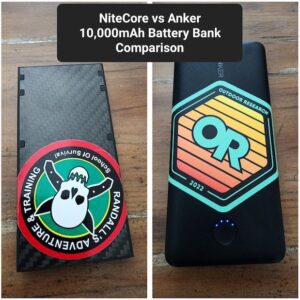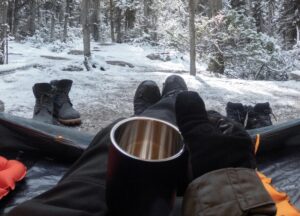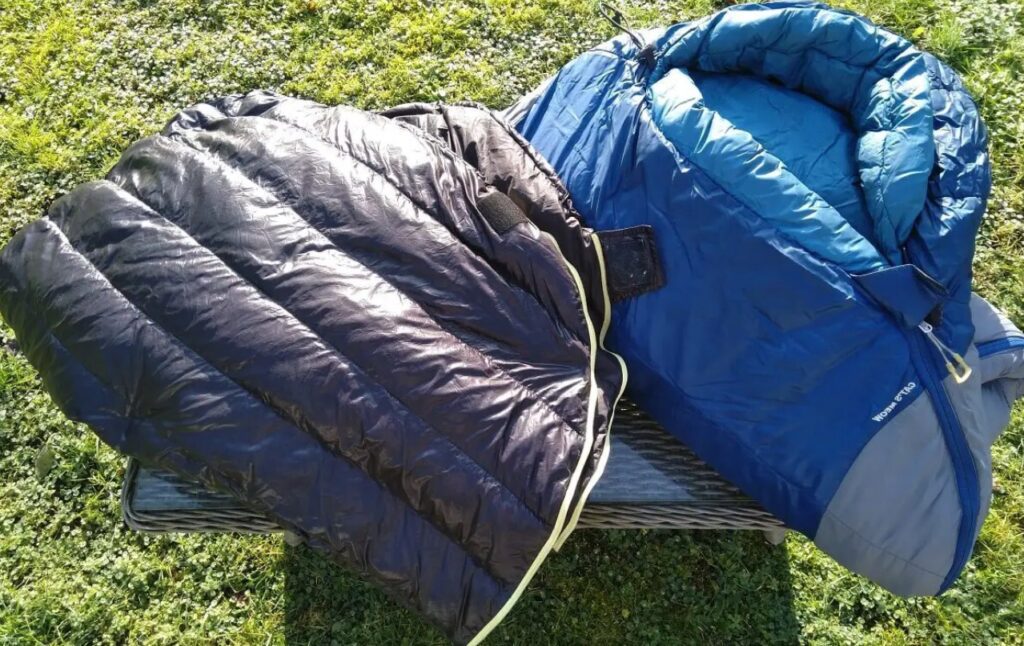
Looking for the perfect companion for your next backpacking adventure? This comprehensive review focuses on the top down and synthetic sleeping bags for outdoor enthusiasts, providing detailed reviews and recommendations. From the Feathered Friends Swallow UL 20, praised for its exceptional warmth-to-weight ratio and build quality, to the Nemo Disco 15, recommended as the most comfortable option for side sleepers, this article has got you covered. Whether you’re on a tight budget or planning a winter expedition, we’ve carefully curated a list that caters to all needs. So, get ready to explore the great outdoors in ultimate comfort and warmth with these top-notch sleeping bags.
Best Overall Sleeping Bag
Feathered Friends Swallow UL 20
When it comes to the best overall sleeping bag for backpacking, the Feathered Friends Swallow UL 20 takes the top spot. This sleeping bag is highly regarded for its exceptional warmth-to-weight ratio, making it a top choice for backpackers looking to optimize their gear. With its 900-fill power down insulation, the Swallow UL 20 offers excellent thermal efficiency, ensuring you stay cozy even in cold temperatures.
Not only does the Swallow UL 20 provide exceptional warmth, but it also boasts impressive build quality. Feathered Friends is known for its craftsmanship, and this sleeping bag is no exception. The materials used are durable and designed to withstand the rigors of backpacking. The bag is also equipped with a water-resistant shell, ensuring you stay dry even in damp conditions. With its continuous baffles, you can easily adjust the distribution of down to suit your comfort preferences.
The Feathered Friends Swallow UL 20 comes in various sizes to accommodate different body types, allowing for a snug and comfortable fit. It also features a well-designed hood and draft collar to prevent heat from escaping, ensuring you stay warm throughout the night. Overall, the Swallow UL 20 is the perfect balance of weight, warmth, and durability, making it the best overall sleeping bag for backpacking.
Most Comfortable Sleeping Bag for Side Sleepers
Nemo Disco 15
If you’re a side sleeper, comfort is essential to ensure a good night’s sleep. That’s why the Nemo Disco 15 is our top recommendation for the most comfortable sleeping bag for side sleepers. This sleeping bag features a unique “Spoon” shape design, providing extra room for your knees and elbows to move freely. This innovative design allows side sleepers to maintain a natural sleeping position without feeling constricted.
The Nemo Disco 15 also offers exceptional insulation and warmth. It features 650-fill power down insulation, which effectively traps heat and keeps you snug in colder temperatures. The ThermoGills ventilation system provides additional temperature regulation, allowing you to cool down without compromising warmth. The bag also comes with a waterproof footbox, ensuring your feet stay dry and cozy even in damp conditions.
Aside from its comfort and warmth, the Nemo Disco 15 is packed with thoughtful features. It has multiple zippered pockets for storing essentials like a phone or headlamp. The hood and draft collar can be cinched tight to seal in heat, and the full-length zipper allows for easy access and ventilation. If you’re a side sleeper looking for the most comfortable sleeping bag, the Nemo Disco 15 is an excellent choice.
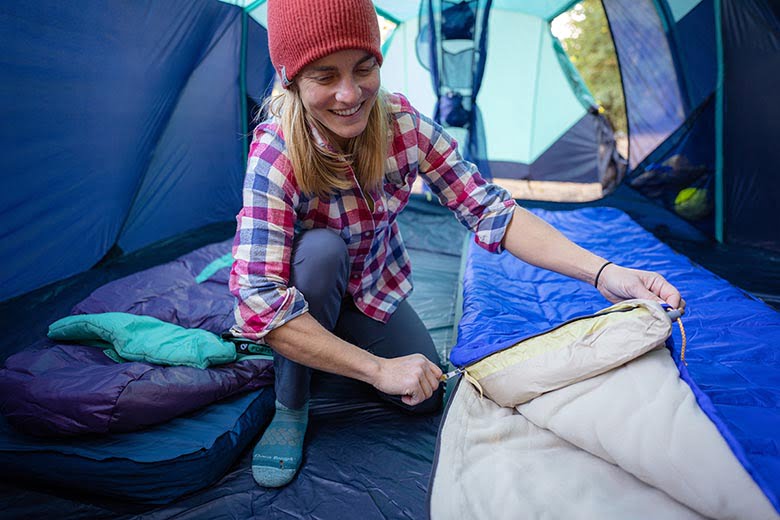
Best Budget Down Sleeping Bag
Kelty Cosmic 20
For budget-conscious backpackers, the Kelty Cosmic 20 offers excellent value without compromising on quality. This sleeping bag is the best choice for those looking for a down sleeping bag that won’t break the bank.
The Kelty Cosmic 20 features 600-fill power down insulation, which provides ample warmth for three-season camping. It has a temperature rating of 20 degrees Fahrenheit, making it suitable for most backpacking adventures. The bag also comes with a draft tube along the zipper to prevent cold spots and heat loss.
Despite its budget-friendly price, the Kelty Cosmic 20 doesn’t skimp on features. It has a hood with an adjustable drawcord to seal in warmth, as well as a zippered stash pocket for storing small essentials. The bag is also lightweight and compressible, making it easy to pack and carry on your backpacking trips.
While the Kelty Cosmic 20 may not have the highest fill power or the most advanced features, it offers reliable performance at an affordable price. If you’re on a budget and in need of a down sleeping bag, the Kelty Cosmic 20 is a solid choice.
Best Ultralight Sleeping Bag for Warm Weather
Sea to Summit Spark 40
When backpacking in warm weather conditions, the last thing you want is to be weighed down by a heavy sleeping bag. That’s where the Sea to Summit Spark 40 comes in. This ultralight sleeping bag is designed specifically for warm weather backpacking, offering exceptional warmth-to-weight ratio and packability.
The Sea to Summit Spark 40 features 850-fill power down insulation, providing excellent warmth while keeping weight to a minimum. The bag weighs a mere 12 ounces, making it one of the lightest sleeping bags on the market. Its ultralight design allows you to save valuable weight in your backpack without sacrificing comfort.
Despite its lightweight construction, the Spark 40 doesn’t compromise on features or durability. It has a contoured mummy shape that maximizes thermal efficiency and minimizes dead space, ensuring effective heat retention. The bag also features a full-length zipper, allowing for easy access and ventilation. Additionally, it comes with a compression sack that reduces its size to a compact package, perfect for ultralight backpacking.
For those who prioritize weight and packability in their warm-weather sleeping bag, the Sea to Summit Spark 40 is the ultimate choice. Its combination of lightweight design, warmth, and durability make it the best option for ultralight backpackers.
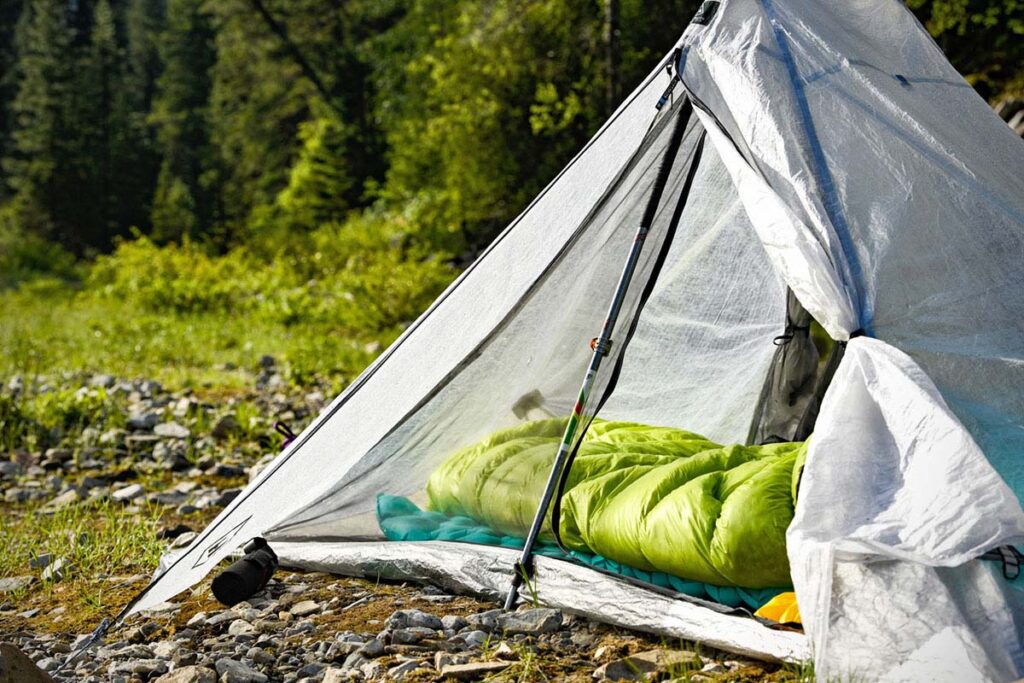
Best Winter/High-Altitude Sleeping Bag
Mountain Hardwear Phantom 0F
If you’re planning a winter adventure or tackling high-altitude expeditions, a sleeping bag capable of withstanding extreme cold is crucial. The Mountain Hardwear Phantom 0F is the best choice for these demanding conditions. With its exceptional warmth-trapping features and reliability, it’s designed to keep you comfortable and protected in the harshest environments.
The Mountain Hardwear Phantom 0F is packed with 800-fill power down insulation, providing outstanding warmth even in subzero temperatures. Its Q.Shield Down treatment ensures that the down retains its loft and thermal efficiency, even in damp conditions. The bag is also constructed with durable materials that resist moisture and abrasion, ensuring long-lasting performance in extreme conditions.
In addition to its warmth, the Phantom 0F is designed for maximum comfort and functionality. It features a mummy shape with a snug hood and draft collar to seal in heat and prevent cold spots. The bag also has a two-way zipper, allowing for easy access and ventilation. Despite its insulation and features, the bag remains relatively lightweight for its category, making it suitable for winter backpacking.
For winter or high-altitude adventures, the Mountain Hardwear Phantom 0F is the top choice. Its exceptional warmth and durability will keep you comfortable in even the most extreme conditions.
Introduction to Backpacking Sleeping Bags
When embarking on a backpacking adventure, choosing the right sleeping bag is essential for a comfortable and restful night’s sleep. Sleeping bags come in various types and designs, each suited for different conditions and preferences. Understanding the different types, factors to consider, and the importance of temperature ratings will help you select the perfect backpacking sleeping bag for your needs.
Different types of sleeping bags
There are two main types of sleeping bags: down and synthetic. Down sleeping bags are insulated with the soft and fluffy under feathers of ducks or geese, providing excellent warmth-to-weight ratio and packability. Synthetic sleeping bags, on the other hand, are filled with man-made fibers that mimic the insulating properties of down. While synthetic bags may not offer the same warmth-to-weight ratio or compressibility as down, they excel in wet conditions, as they retain their insulation even when wet.
Importance of choosing the right sleeping bag
Choosing the right sleeping bag is crucial for a comfortable and restorative sleep while backpacking. A well-fitting and properly rated sleeping bag can make the difference between a restful night’s sleep and a miserable experience. The right sleeping bag will provide sufficient insulation, protect you from the elements, and offer the comfort you need to recover from a long day of hiking and exploring.
Factors to consider when selecting a backpacking sleeping bag
When selecting a backpacking sleeping bag, several factors should be taken into consideration. These include: temperature rating, weight and packability, features, and budget. Temperature rating determines the lowest temperature at which the bag will keep you warm. Weight and packability are crucial for backpackers, as minimizing weight and bulk is essential for comfortable hiking. Features such as hood design, zippers, and draft collars can significantly impact warmth and comfort. Finally, budget considerations will help narrow down the options and find the best sleeping bag within your price range.
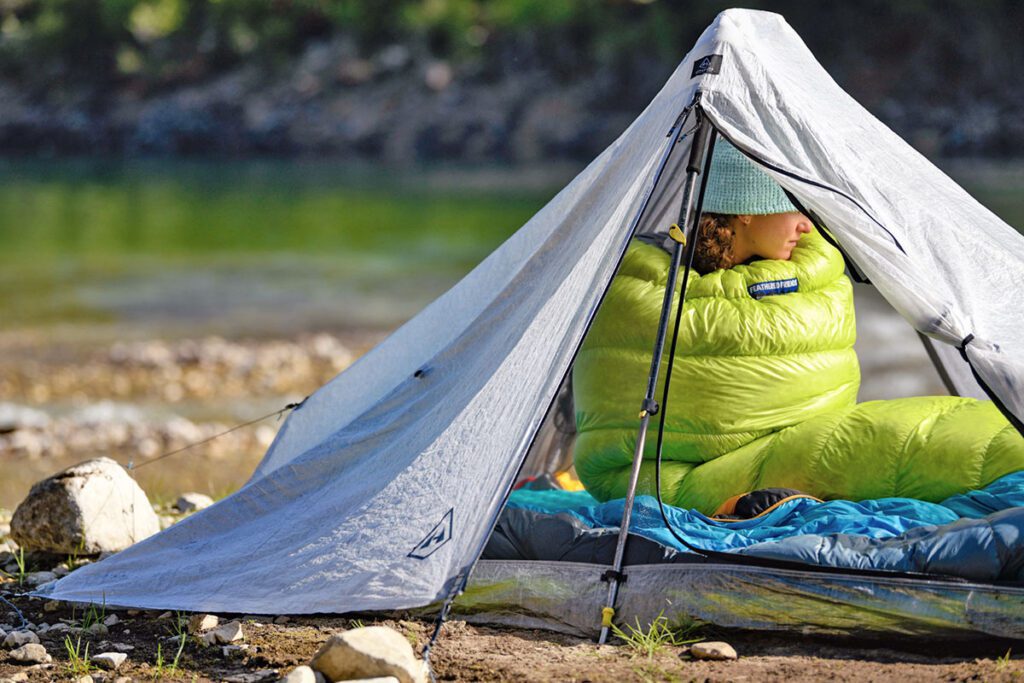
Understanding Temperature Ratings
Temperature ratings are a critical aspect of selecting a backpacking sleeping bag. They indicate the lowest temperature at which the bag will keep you warm, providing essential information to match the bag with the expected weather conditions. Understanding how temperature ratings work and the differences between EN/ISO temperature ratings will help you make an informed decision.
How temperature ratings work
Temperature ratings are provided by manufacturers to give an estimate of the lowest temperature at which a sleeping bag will provide sufficient warmth. However, these ratings can be subjective and may not reflect individual comfort levels. It’s important to consider factors such as personal metabolism, clothing layers, and ground insulation when interpreting temperature ratings.
Understanding EN/ISO temperature ratings
In recent years, the European Standard (EN) and International Organization for Standardization (ISO) have established standardized testing methods for sleeping bag temperature ratings. These standards provide more consistent and objective ratings across different manufacturers. EN/ISO temperature ratings consist of three values: comfort, limit, and extreme. The comfort rating indicates the temperature at which a standard woman can sleep comfortably. The limit rating pertains to a standard man, and the extreme rating indicates the lowest temperature at which the bag can provide survival-level warmth. This system allows for better comparison and understanding of the temperature performance of different sleeping bags.
Importance of choosing a sleeping bag with the right temperature rating
Choosing a sleeping bag with the right temperature rating is essential for comfort and safety while backpacking. An overly warm sleeping bag can lead to excessive sweating, discomfort, and poor sleep, while a bag rated below the expected temperatures can result in cold nights and potential hypothermia. Considering the expected weather conditions and personal comfort preferences will help ensure you select a sleeping bag with an appropriate temperature rating for your needs.
Weight and Packability
Weight and packability are crucial factors to consider when selecting a backpacking sleeping bag. As a backpacker, every ounce matters, and reducing weight and bulk without sacrificing warmth and comfort is essential for an enjoyable hiking experience.
The importance of weight and packability for backpackers
Weight and packability directly affect your backpacking experience. A heavy and bulky sleeping bag can weigh you down, lead to fatigue, and limit your hiking mileage. On the other hand, a lightweight and compact sleeping bag frees up valuable space in your backpack and allows for easier movement on the trail. Finding the right balance between weight and packability is crucial for optimizing your gear and enhancing your overall backpacking experience.
Exploring the trade-off between weight and insulation
There is often a trade-off between weight and insulation when it comes to sleeping bags. Higher quality insulation, such as high-fill power down, provides excellent warmth while keeping weight to a minimum. However, these bags tend to come with a higher price tag. On the other hand, synthetic insulation may offer more affordable options, but they are generally bulkier and heavier. Determining your priorities and understanding the expected weather conditions will help you strike the right balance between weight and insulation for your backpacking needs.
Factors to consider when evaluating weight and packability
When evaluating the weight and packability of a sleeping bag, consider factors such as fill power, fill weight, shell material, and compressibility. Higher fill power down will provide more warmth per ounce and compress more effectively. Similarly, a lower fill weight will result in a lighter sleeping bag. Pay attention to the shell material, as lightweight and durable fabrics can further reduce weight without sacrificing durability. Finally, check the compressibility and size of the packed sleeping bag, ensuring it fits well within your backpack and doesn’t take up unnecessary space.
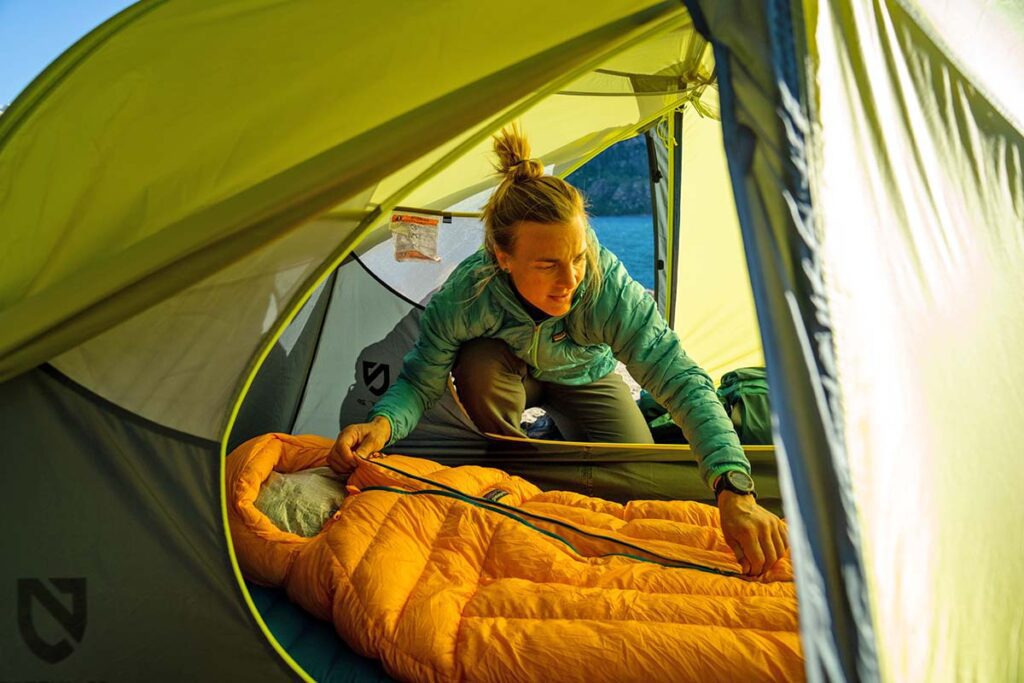
Differences Between Down and Synthetic Sleeping Bags
Choosing between down and synthetic sleeping bags is one of the critical decisions when selecting a backpacking sleeping bag. Each type has its advantages and disadvantages, and understanding these differences will help you make an informed choice based on your needs and preferences.
Advantages and disadvantages of down sleeping bags
Down sleeping bags have long been favored by backpackers for their superior warmth-to-weight ratio and compressibility. The natural insulation provided by down feathers allows for exceptional warmth with minimal weight and bulk. Down bags provide excellent loft, trapping air and creating a layer of insulation around your body. However, down does have some disadvantages. When wet, down loses its insulating properties and can take a long time to dry. Down bags are also typically more expensive than their synthetic counterparts and require more careful maintenance to ensure long-term performance.
Advantages and disadvantages of synthetic sleeping bags
Synthetic sleeping bags are manufactured using man-made fibers that mimic the insulating properties of down. They offer several advantages over down bags, particularly in wet conditions. Synthetic insulation retains its insulation even when wet, making it a reliable option for rainy or humid environments. Synthetic bags are generally more affordable than down bags and require less maintenance. However, they do tend to be bulkier and heavier, offering lower warmth-to-weight ratio and compressibility.
Factors to consider when choosing between down and synthetic
When choosing between down and synthetic sleeping bags, consider factors such as expected weather conditions, budget, and personal preferences. If you frequently camp in wet environments or expect to encounter rain, a synthetic bag may be a more reliable choice. If weight and compressibility are top priorities, down bags offer superior performance. Budget considerations may also play a role, as synthetic bags generally come at a lower price point than down bags. Ultimately, understanding the advantages and disadvantages of each type will help you make the right decision for your backpacking needs.
Conclusion and Final Recommendations
In conclusion, selecting the right backpacking sleeping bag is crucial for a comfortable and restful night’s sleep on the trail. The Feathered Friends Swallow UL 20 stands out as the best overall sleeping bag for its exceptional warmth-to-weight ratio and build quality. For side sleepers, the Nemo Disco 15 offers the most comfortable sleeping experience with its unique “Spoon” shape design. The Kelty Cosmic 20 provides excellent value as the best budget down sleeping bag. Those backpacking in warm weather conditions should consider the Sea to Summit Spark 40 for its ultralight design and optimal warmth. Finally, the Mountain Hardwear Phantom 0F is the top choice for winter or high-altitude adventures with its exceptional warmth-trapping features.
When making your final decision, consider the temperature ratings, weight, packability, and insulation type that best meet your needs. Additionally, take into account factors such as price, hood design, and additional features that may enhance your sleeping experience. By carefully considering all these factors, you’ll be able to find the perfect backpacking sleeping bag that meets your requirements and ensures a restful night’s sleep on your outdoor adventures.
Lastly, it’s important to take care of your sleeping bag to ensure its longevity and performance. Follow the manufacturer’s instructions for cleaning and storage. Avoid compressing the bag for long periods when not in use to maintain the loft of the insulation. With proper care, your backpacking sleeping bag will continue to provide warmth and comfort on many adventures to come.
Happy hiking and sleep tight!
